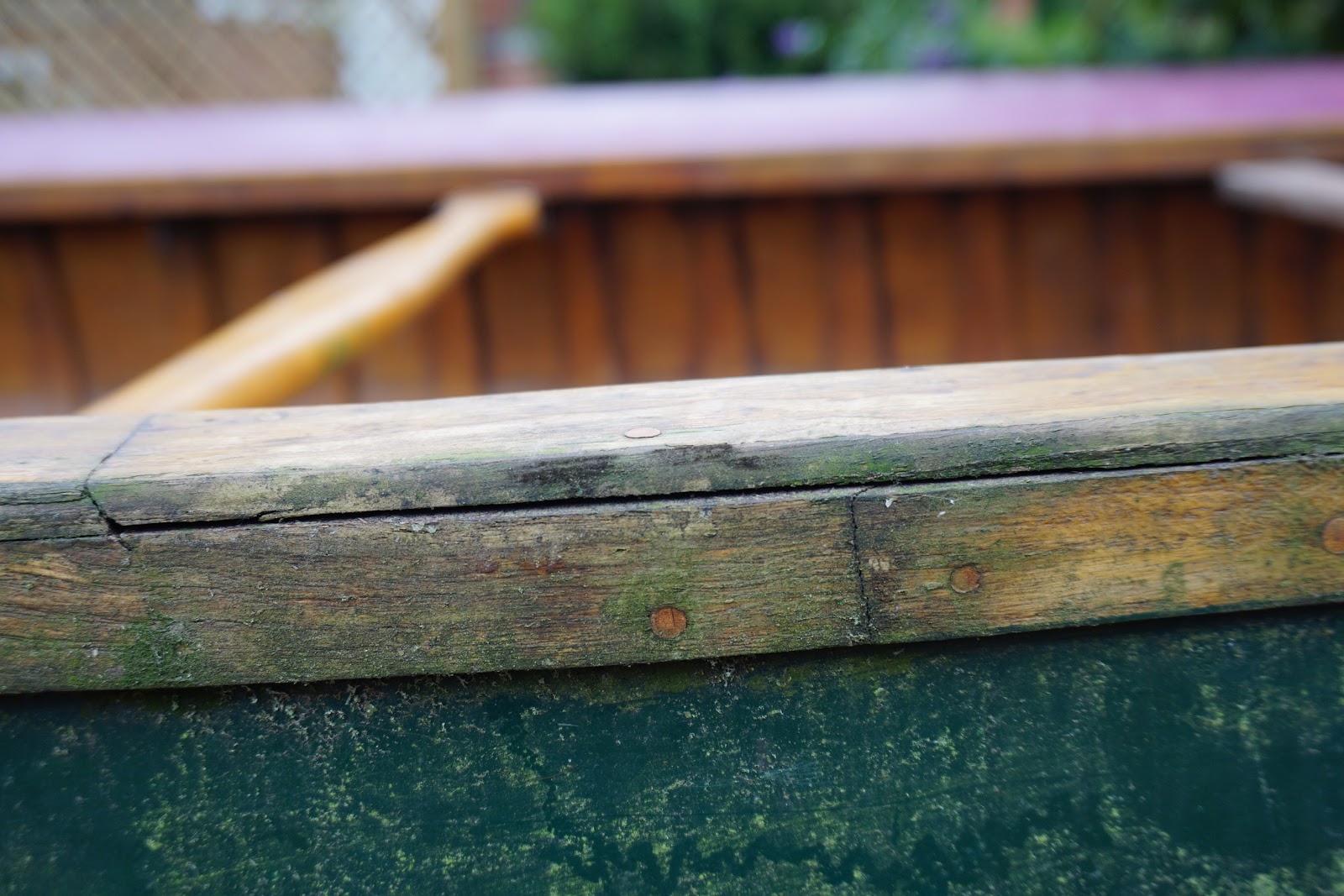samb
Wooden Canoe Maniac
I started disassembling my Rushton Navahoe today. I went slowly and carefully so I can see how it all goes together and to try to work out what is original or not and took photos along the way.
So far I have taken off the outer rails and caps on one side only.
The caps are oak and held on with 1” square copper boat nails. It looks like these were the second lot of caps to go on as there were other nail holes into the gunnel beneath the caps. The caps are 1½” x ¼” . At the decks they taper slightly in width and cover the edge of the deck by around ¼” at the stem
The oak outer rails were held with the same copper nails and these were first fitted with this canvas as no other nail holes were present in the canvas. The outer rails are ⅞” x ³/16”
Both the cap and rail were made up of three parts - a middle section of about 3’ and two longer ends. They were joined with fairly steep scarfs.

The rib tops are level with the gunnel and chamfered.
I’m trying to be methodical and not get ahead of myself but I noticed the canvas is stuck to the planking certainly all along the top edge with what looks like paint as well as tacks.. . . . . but I’m not allowed to look at that properly yet!
Sam
So far I have taken off the outer rails and caps on one side only.
The caps are oak and held on with 1” square copper boat nails. It looks like these were the second lot of caps to go on as there were other nail holes into the gunnel beneath the caps. The caps are 1½” x ¼” . At the decks they taper slightly in width and cover the edge of the deck by around ¼” at the stem
The oak outer rails were held with the same copper nails and these were first fitted with this canvas as no other nail holes were present in the canvas. The outer rails are ⅞” x ³/16”
Both the cap and rail were made up of three parts - a middle section of about 3’ and two longer ends. They were joined with fairly steep scarfs.
The rib tops are level with the gunnel and chamfered.
I’m trying to be methodical and not get ahead of myself but I noticed the canvas is stuck to the planking certainly all along the top edge with what looks like paint as well as tacks.. . . . . but I’m not allowed to look at that properly yet!
Sam






